
midas SoilWorks
A modern paradigm for integrated geotechnical solutions
SoilWorks has been designed to handle the full range of geotechnical applications with modern and highly developed functions to expedite the modeling and result extraction processes. These features provide solutions that are far superior to those of other geotechnical programs in the market which are only capable of handling specific types of applications with varying degrees of limitations in functionality. With SoilWorks, you can conveniently run all of your geotechnical analyses on a single, comprehensive and easy to use platform
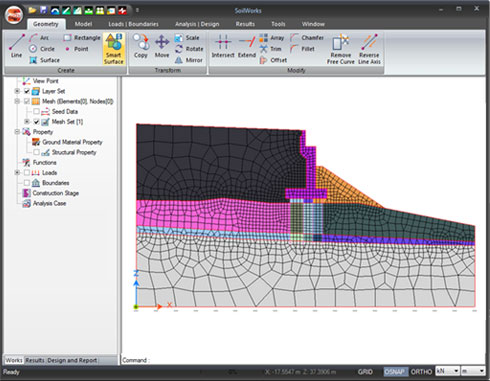
Work SMARTer not harder
Advanced functions that create new standards of efficiency
SoiWorks has several SMART features that are designed to help you perform your geotechnical modeling and analysis with greater ease, efficiency and confidence than ever before. Each feature has been designed to overcome common time-consuming inefficiencies of geotechnical design.
The SoilWorks modeling interface consists of CAD-based commands that are based on standard CAD modeling functions that are most widely used by engineers. This gives you the option of creating your drawings directly in the program itself without having to learn a new and complex interface. These CAD-based commands will ensure that your proficiency with AutoCAD will only serve to enhance your user experience with SoilWorks.
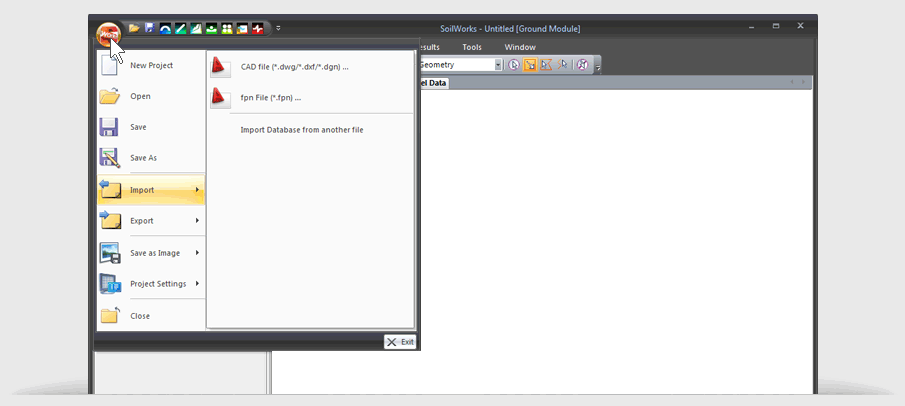
Surfaces, mesh sets, and boundary conditions can be automatically assigned to your project drawing. These capabilities will save considerable amounts of time and effort during your modeling process, especially for projects with complex geometry.
An extensive constitutive model database that contains a variety of widely used models including Elastic models for underground structure design, Mohr-Coulomb models for the defining the shear stresses of soils and rocks, Tresca/von Mises models for non-cohesive materials, Hoek-Brown model for rock failure parameters, and Drucker-Prager models to simulate the plastic deformation of soils. SoilWorks also features an extensive ground material property database that contains material properties for a variety of rock and soil types. These databases eliminate the need to search through any outside sources for modeling and material parameters.
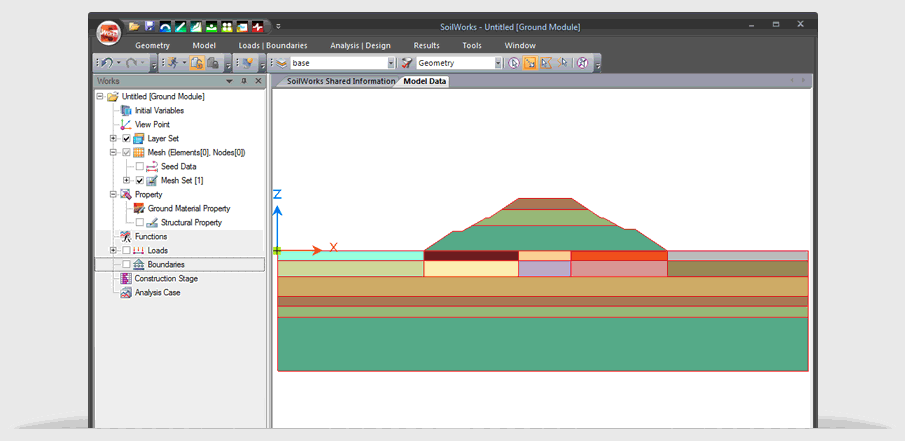
The SoilWorks modules are all linked on a universal platform that allows for the fluid transfer of data between separate model files. Models, assigned properties, and results can be seamlessly transferred between each file. This unique capability eliminates inefficiencies that come with performing coupled analysis on two completely separate software packages. So now you will be able to perform multiple analysis types on the same project without having to repetitively perform detailed data entry and remodeling analysis case.
Streamlined Parametric Analysis
Multi-tasking without the multi-effort
SoilWorks is equipped with advanced parametric analysis capabilities that enable you to create several models in a single file and have the analysis results for each model calculated simultaneously. This provides a significant advantage over the parametric analysis procedures of other programs that require you to inefficiently create separate model files and run separate analyses for each case.
All the results are generated in a single output file as well so that you can easily sort through the results for each case. This ability is particularly useful for studies in which the results of several cases need to be compared in order to determine the optimal design. This is also useful for projects that require the analysis of multiple designs that are all variations of the same base model.
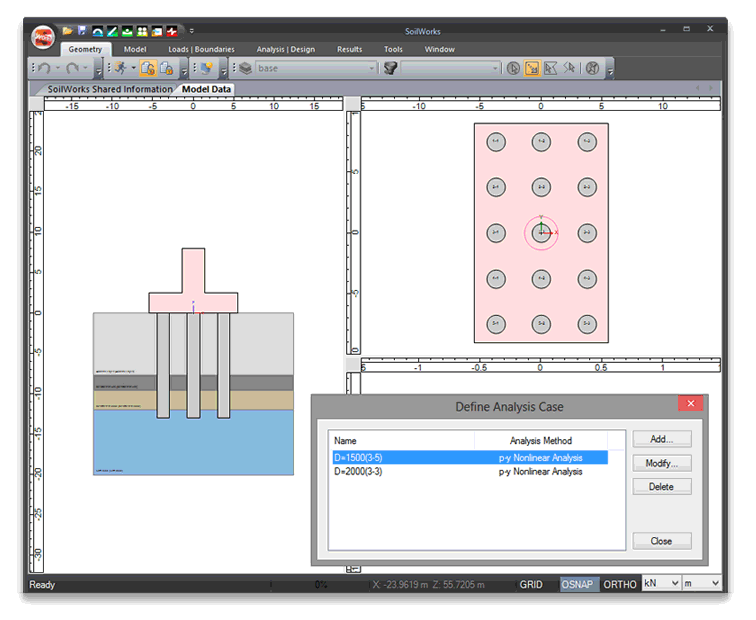
All the results are generated in a single output file as well so that you can easily sort through the results for each case. This ability is particularly useful for studies in which the results of several cases need to be compared in order to determine the optimal design. This is also useful for projects that require the analysis of multiple designs that are all variations of the same base model.
High Quality Report Auto-generation.
Create meticulously detailed reports with one simple step
SoilWorks has a highly advanced report generator that automatically exports and organizes your results into an MS Word file. Specialized features are included to extract and organize results associated with pile foundation design, tunnel design, adjacent structure analysis, consolidation analysis, and slope design. The report generator completely eliminates the tedious process of manually extracting results to create your final report. In-depth reports consisting of hundreds of pages of data can be automatically generated, thus saving countless hours of time that would have been spent in manually sorting and organizing data. The report generator can be directly used for the design process since it enables you to easily make revisions to your project and then automatically generate updated reports that take your design based revisions into account. For further convenience, the generator also displays design specifications and codes that were used at the beginning of each report.
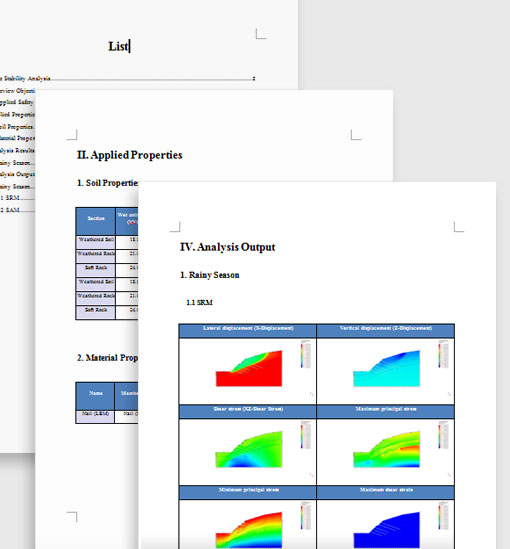
The All In One Software
Your entire geotechnical toolbox in a single program
SoilWorks provides innovative solutions for the full range of geotechnical analysis. It combines the capabilities of several geotechnical analysis modules and integrates them into one versatile program that handles all geotechnical design applications. This ground-breaking flexibility completely eliminates the need to inefficiently rely on several different software programs.
SoilWorks has been widely used for the following geotechnical projects:

P-y analysis and stability checks for group and single pile configurations

Tunnel lining analysis, construction stage analysis and stability checks for adjacent structures.

P-y analysis and stability checks for group and single pile configurations

1D consolidation analysis to calcuate key values such as the total settlement, total degree of consolidation, and total residual settlement for progressive time periods.

Seepage and flux analysis for dam, levee, and embankment design.

Response spectrum analysis for conventional seismic design applications as well as time history analysis for detailed evaluations of complex structures or ground conditions.